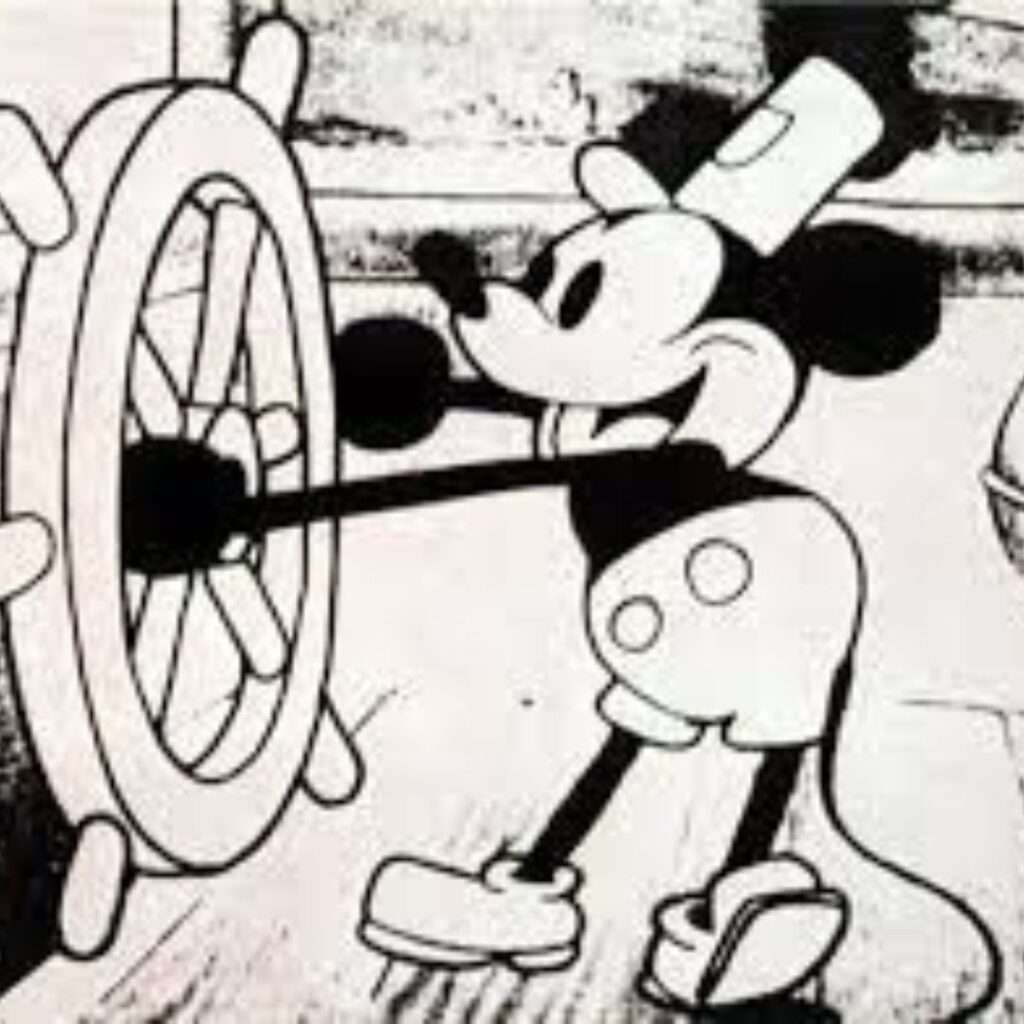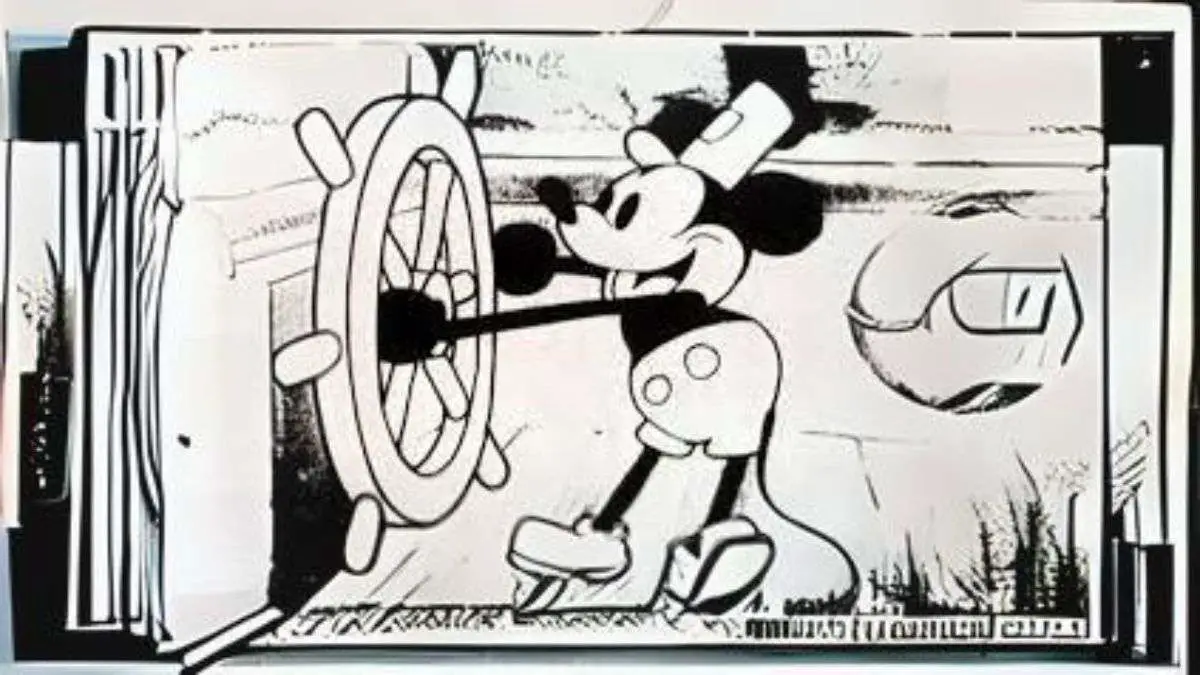Table of Contents
- Introduction
- Mickey Mouse Copyright Journey
- Mickey Mouse Copyright Expires: What Now?
- Legal and Creative Ramifications
- The Future of Mickey Mouse
- Conclusion
Introduction
You’ve probably heard. Yes, the Mickey Mouse copyright expires.
Mickey Mouse is one of the world’s most iconic and recognizable characters. As Disney’s mascot, Mickey Mouse has been the face of the company for nearly a century. However, the original version of Mickey from the 1928 film Steamboat Willie entered the public domain on 1 January 2024 due to expiring copyright protections. This will have significant implications for Disney and the character of Mickey Mouse.
Significance of Mickey Mouse
Mickey Mouse was created in 1928 by Walt Disney and Ub Iwerks and debuted in the animated short Steamboat Willie. The cartoon succeeded enormously, and Mickey soon became Disney’s most famous character. Over the decades, Mickey evolved into a global pop culture icon and the mascot of the Walt Disney Company.
His image can be found on countless consumer products, and he stars in films, TV shows, video games, theme park attractions, and more. Mickey is one of the most recognizable fictional characters worldwide and remains integral to Disney’s brand identity.
Upcoming Expiration of Copyright
The original version of Mickey Mouse from Steamboat Willie has been protected under copyright law for 95 years. However, under the Copyright Term Extension Act, works published before 1978 are granted copyright protection for only 95 years. As a result, Steamboat Willie and the version of Mickey Mouse contained within it entered the public domain on the first day of 2024.
What does it mean when this Mickey Mouse copyright expires? This means that the early rendition of Mickey will be free for anyone to use without needing permission from Disney or owing royalties.
Mickey Mouse Copyright Journey
Mickey Mouse first appeared in the 1928 animated short film Steamboat Willie, which instantly hit Mickey Mouse into stardom. At that time, the initial copyright duration for creative works was 56 years. Disney renewed Mickey’s copyright in 1953, extending his protection for another 28 years.
When the Copyright Act of 1976 was enacted, existing copyrights were eligible for another 19 years of protection. Disney took advantage of this and renewed Mickey’s copyright again in 1984. This set of copyright term extensions has allowed Disney to maintain exclusive control over the iconic character for nearly a century.
Gradual Expansion of Copyright Duration
Various copyright acts repeatedly expanded the original 56-year copyright duration over the 20th century. These gradual extensions were often dubbed the “Mickey Mouse Protection Acts,” as they seemed conveniently timed to prevent Mickey Mouse and other early Disney characters from entering the public domain.
However, other copyright holders also lobbied for these expanded protections. The 1998 Copyright Term Extension Act added another 20 years of exclusivity, taking the total copyright term to 95 years from publication. This has postponed Mickey’s public domain entry to 2024.
Understanding the Implications When the Mickey Mouse Copyright Expires
With the Mickey Mouse copyright expiration, anyone can incorporate those depictions into new creative works without permission from Disney. This could lead to unauthorized Mickey Mouse adaptations across various mediums.
However, while the Mickey Mouse copyright expires, Disney’s trademark on the Mickey Mouse name and image remains intact. Therefore, while others can reuse the original cartoon character, they cannot market their works with Mickey’s name or claim Disney officially endorses him.
Additionally, later interpretations of Mickey Mouse with sufficiently distinct creative additions would still fall under Disney’s copyright. So, only the earliest Mickey Mouse copyright expires, considering that this version, with minimal originality, fully enters the public domain in 2024.
Mickey Mouse Copyright Expires: What Now?
As the Mickey Mouse copyright expires, questions arise about what will happen when the iconic character enters the public domain. This represents uncharted territory for Disney, which has built an empire around Mickey Mouse over the past century. Entering the public domain means that certain early incarnations of Mickey will no longer be under Disney’s exclusive control.
Exploring Public Domain Concepts and Impacts
When a creative work’s copyright term expires, it enters the “public domain” – meaning the intellectual property is no longer privately owned. Anyone can freely use it without permission or payment. This allows the work to be reproduced, adapted, distributed, and sold by third parties.
For major copyright holders like Disney, this represents a relinquishing of control and revenue potential around those early works. However, it also spurs new creativity and art as others legally build upon the now-unrestricted content. Public domain status tends to increase access and exposure for older works.
Opportunities and Challenges for Non-Disney Creators
As the Mickey Mouse copyright expires and enters the public domain, creators outside Disney will have new-found freedom to legally feature Mickey Mouse in their productions. This introduces opportunities for innovative reimaginings, mashups with other characters, and modern updates to the classic mouse.
Challenges include potential backlash from Disney fans and distinguishing their adaptations from Disney’s still heavily protected trademark on Mickey’s name and image. Creators must thoughtfully consider leveraging the public domain status without misleading audiences or infringing on Disney’s ongoing rights. But the possibilities for reinventing an icon of 20th-century animation are exciting. As Mickey Mouse enters this new chapter, his future lies not only with Disney but with the creativity of others who now have access to his origins.
Legal and Creative Ramifications
With Mickey Mouse’s early cartoon version entering the public domain, Disney and other copyright holders have significant legal and creative implications to consider. Though Steamboat Willie is now freely usable, Disney’s later iterations of Mickey Mouse remain protected, leading to potential confusion around infringement.
Navigating Legal Gray Areas
Disney must be careful about enforcing their rights to newer versions of Mickey Mouse while not overstepping into the public domain space now occupied by the 1928 cartoon. Professor Jennifer Jenkins explained, “It’s going to be interesting to see how Disney handles this and manages their copyright around the character.”
Legal gray areas may arise, for example, if a creator makes an unauthorized Mickey Mouse film using some protected elements of his later characterization while also incorporating public domain aspects.
Creativity Unleashed… and Infringement Concerns
With the expiration of the Mickey Mouse copyright, artists and storytellers outside of Disney finally have free rein to reimagine and remix the classic character without fear of legal repercussions. This could lead to fascinating new animated shorts, books, or films starring Mickey Mouse.
However, Disney will likely still police the use of newer versions of the characters they control. Overly aggressive takedowns by Disney against creators tapping into the 1928 public domain Mickey Mouse could spark backlash and accusations of overreach.
Potential copyright disputes may emerge between Disney and independent artists regarding which creative elements of Mickey Mouse now fall firmly in the public domain. There is excitement, but also wariness as creators navigate this new terrain.
The Future of Mickey Mouse
As the original Mickey Mouse character enters the public domain in 2024, speculation abounds regarding the future trajectory of this iconic figure in popular culture. No longer under Disney’s exclusive control, Mickey Mouse will be free for anyone to use, adapt, and reimagine legally.
Many anticipate that the early, black-and-white version of Mickey will experience a resurgence in interest and appearances across various media. From cameo appearances in indie films and video games to creative reinterpretations by visual artists, this public domain Mickey offers rich creative possibilities.
However, given Mickey’s enduring association with Disney in the minds of mass audiences, the company will likely retain de facto control and influence over the contemporary image and perception of the character. As Disney continues producing new Mickey Mouse cartoons and leveraging him as the face of their brand, non-Disney uses of the original 1928 Mickey may occupy more of a niche in popular culture.

Still, the public domain status of the first Mickey Mouse opens the door for parodies, homages, and subversive take on such a ubiquitous figure in animation. Smaller creators now have the freedom to experiment with Mickey without fear of legal repercussions. This could lead to innovative short films, irreverent comic books, or remixed video art featuring the mouse.
While the copyrighted, family-friendly Mickey that appears on Disney Channel and in theme parks will remain Disney’s domain, the early Mickey Mouse of the late 1920s, with his rougher edges and more mischievous spirit, now has a chance at new life among independent animators, filmmakers, and artists. His status as a pop culture icon will likely only grow more complex and multifaceted.
Conclusion
Many wonder what will happen next after the Mickey Mouse copyright expires. The copyright expiration and subsequent transition into the public domain are milestone events with significant implications. As one of the world’s most iconic cartoon characters leaves the protective realm of copyright, opportunities arise for creators while challenges emerge for Disney.
Reflecting on Copyright’s Impact
Mickey’s long copyright journey illustrates how policies enacted decades ago still reverberate today. Copyright law has shaped Mickey’s status from early renewals to major extensions. As beloved fictional figures eventually enter the public domain, we must reflect on how copyright terms impact creativity and culture. Shorter copyright durations could motivate new works, while longer protections might provide more incentives. There are good-faith arguments on both sides. Ultimately, the public domain creates openings for reimagining iconic characters.
The Future of an Icon
Once the earliest Mickey Mouse cartoons enter the public domain, the iconic character will be partially unshackled from Disney’s control. While trademarks provide some ongoing protection, Mickey will be open to adaptation by other creators.
What new versions might emerge? Will Mickey remain family-friendly, or might he gain an edge? Might we see mashups with other characters?
While the future is unclear, Mickey’s status change compels us to rethink relationships between copyright, creativity, and characters. As this cultural legend crosses into public ownership, Mickey Mouse remains an emblem of our collective imagination. Perhaps his unfolding legacy will challenge us to envision new creative horizons.
